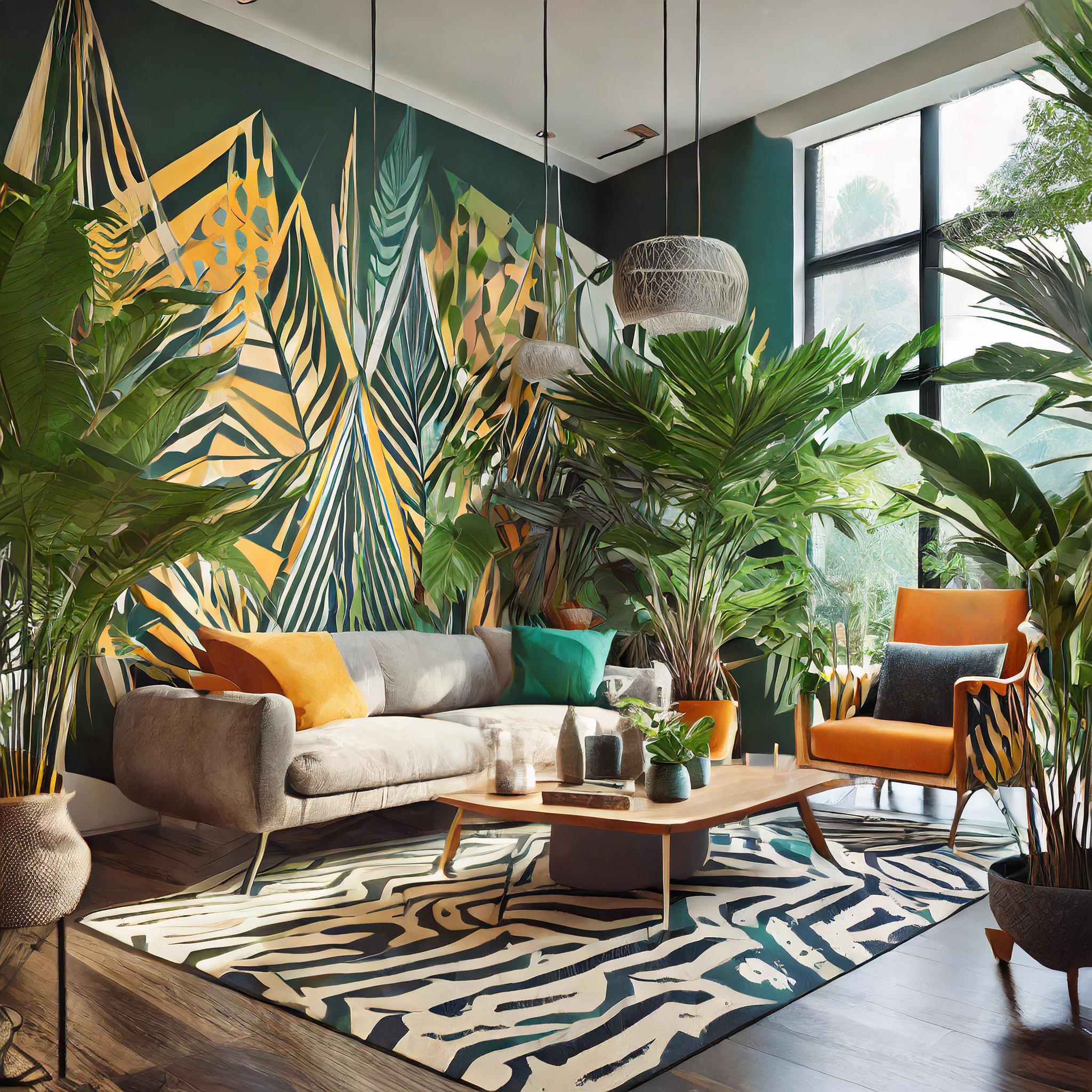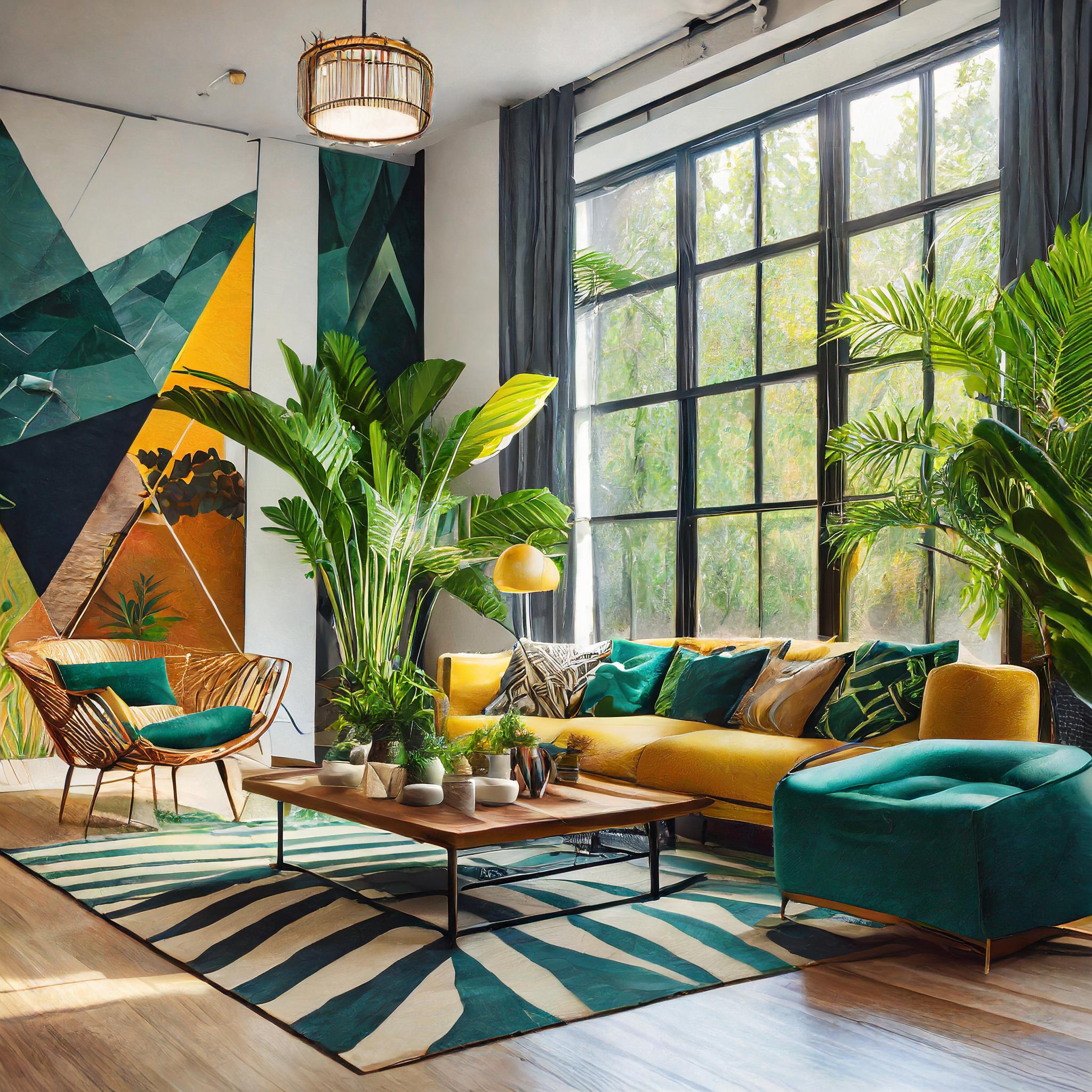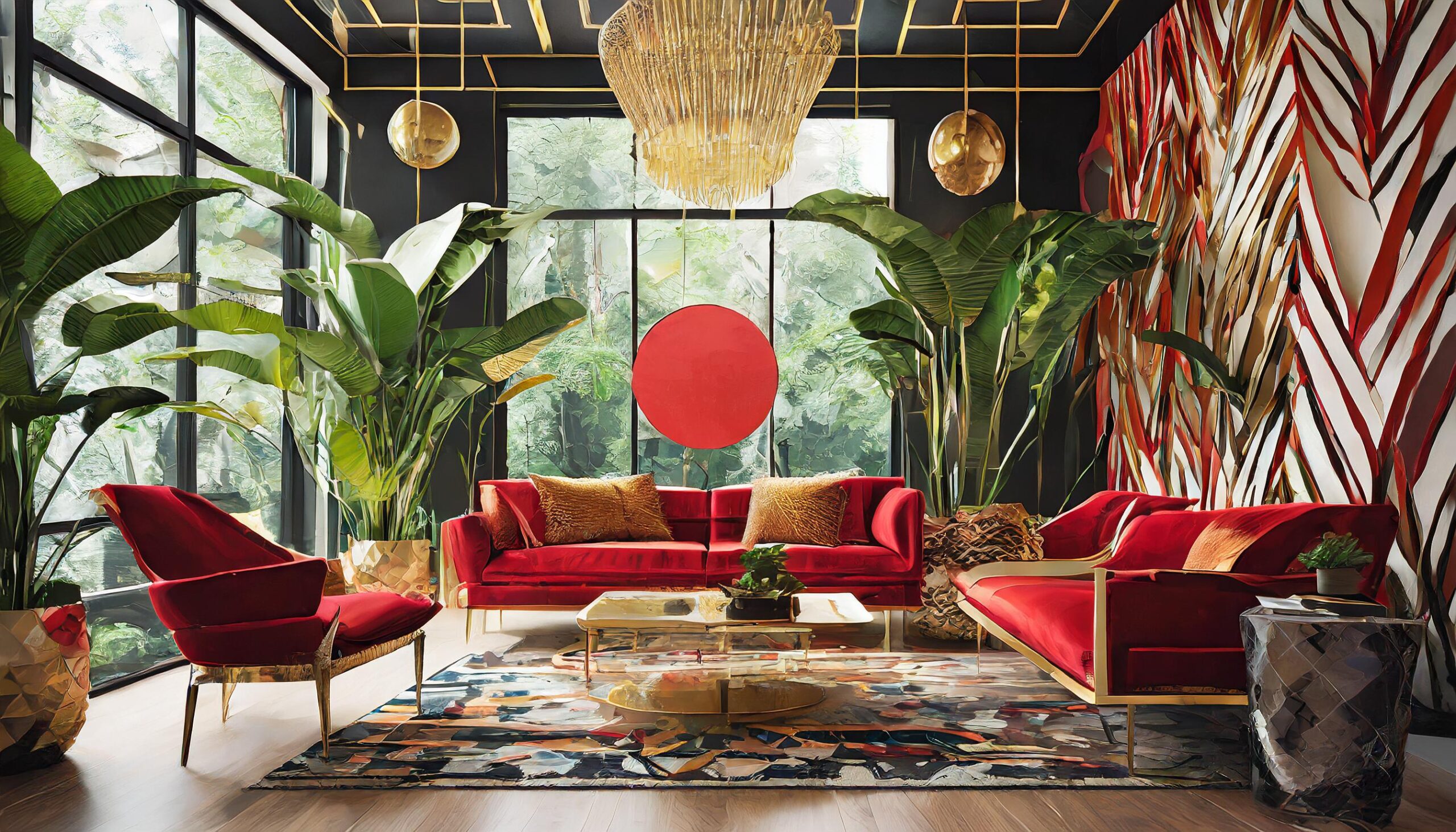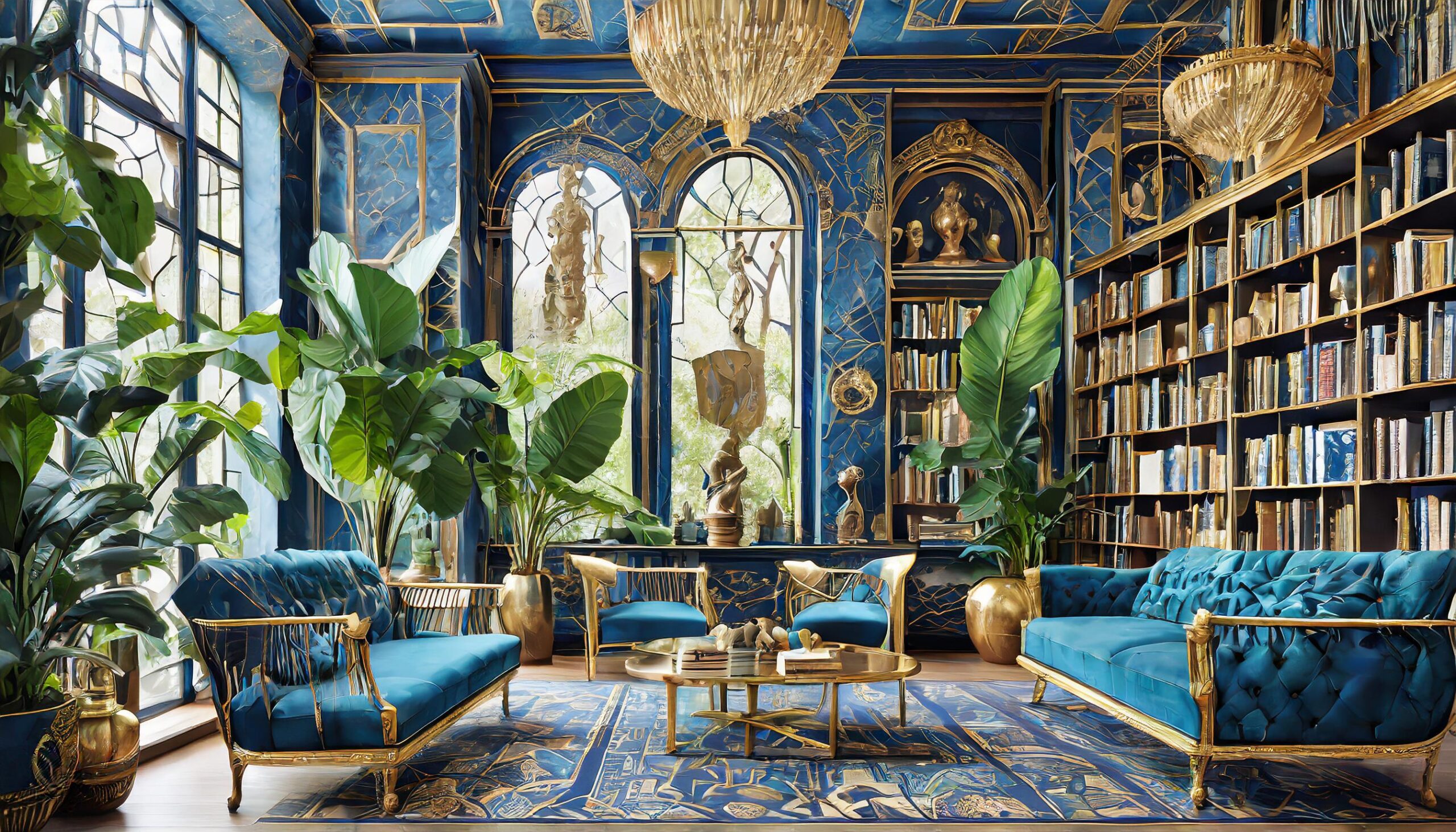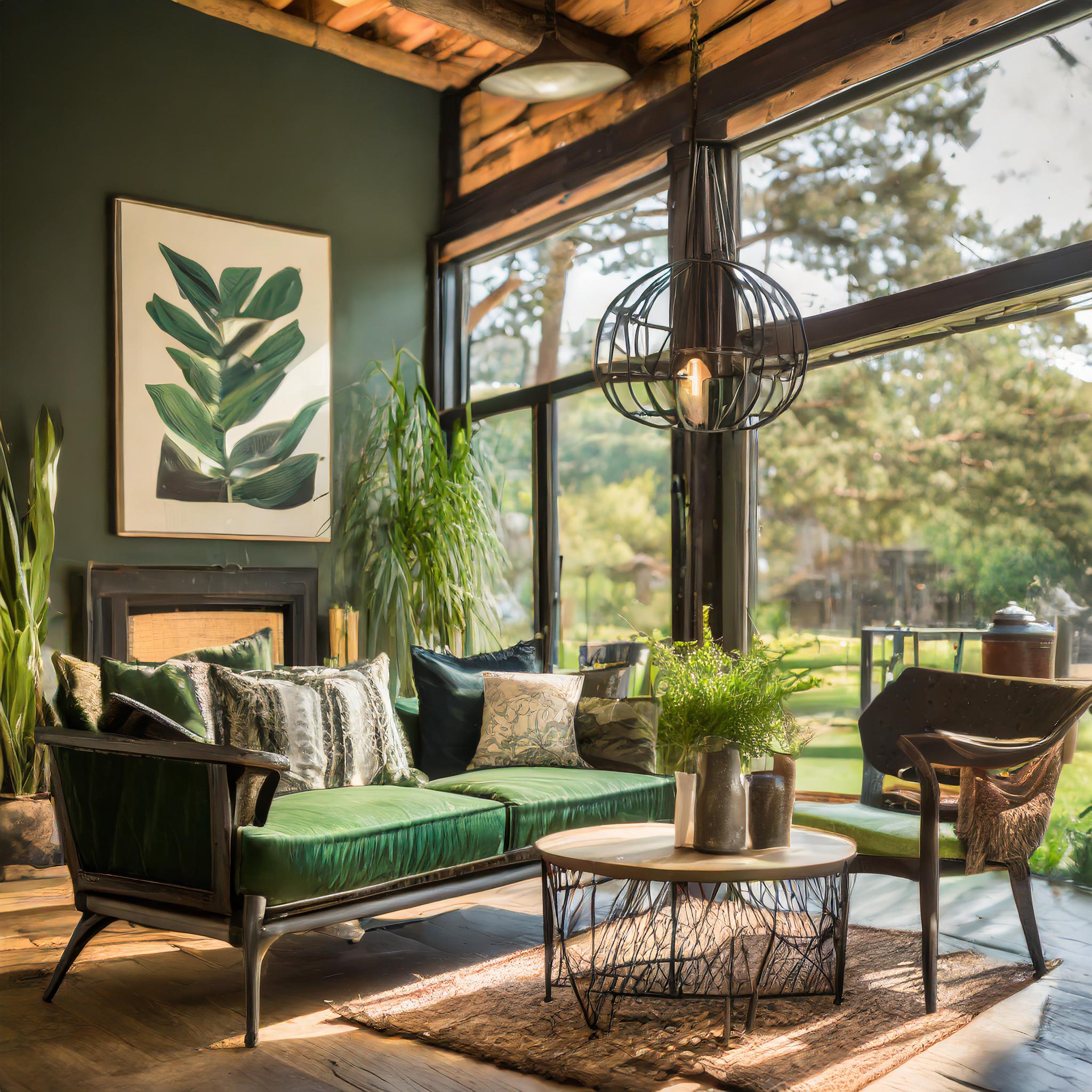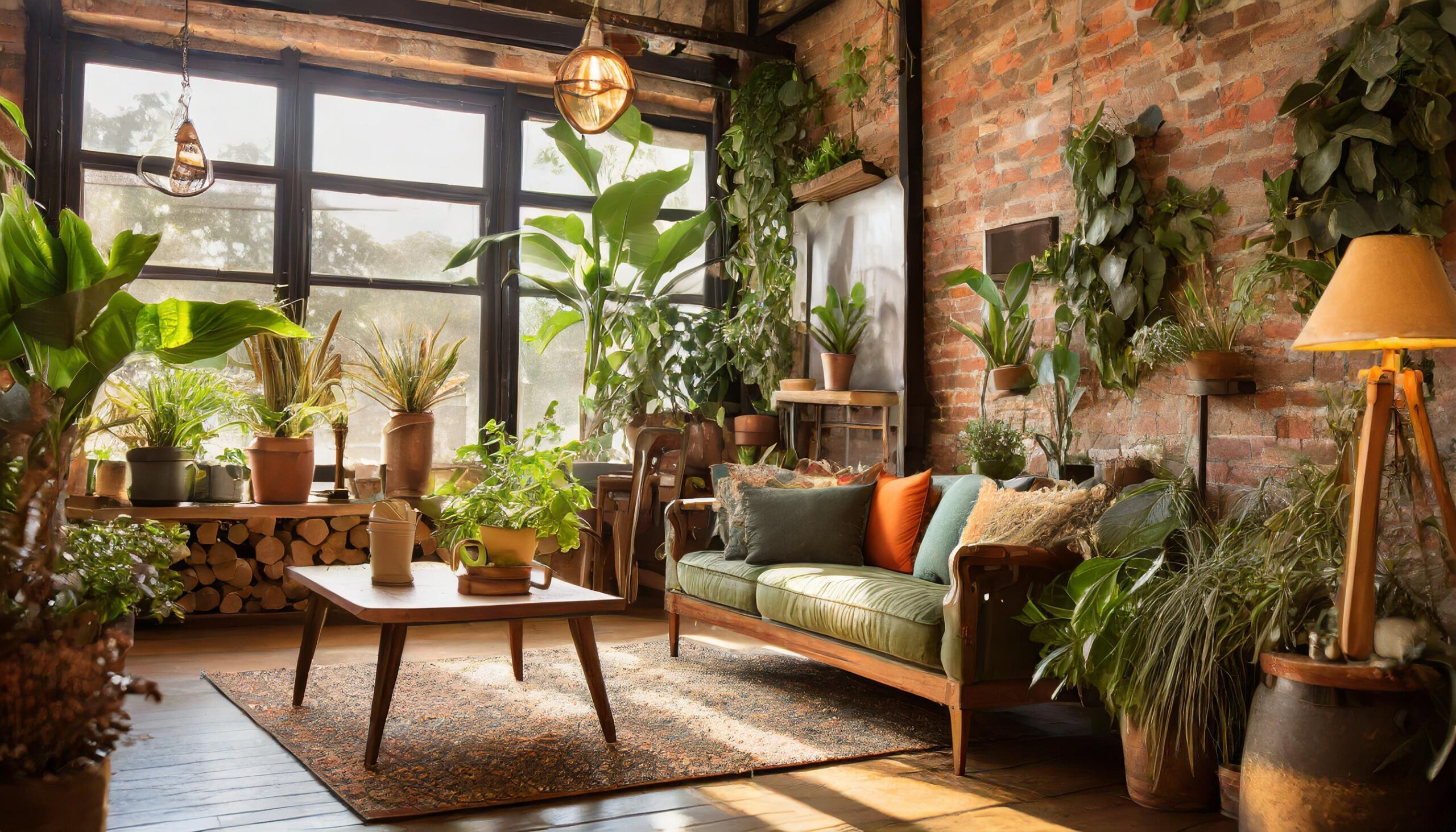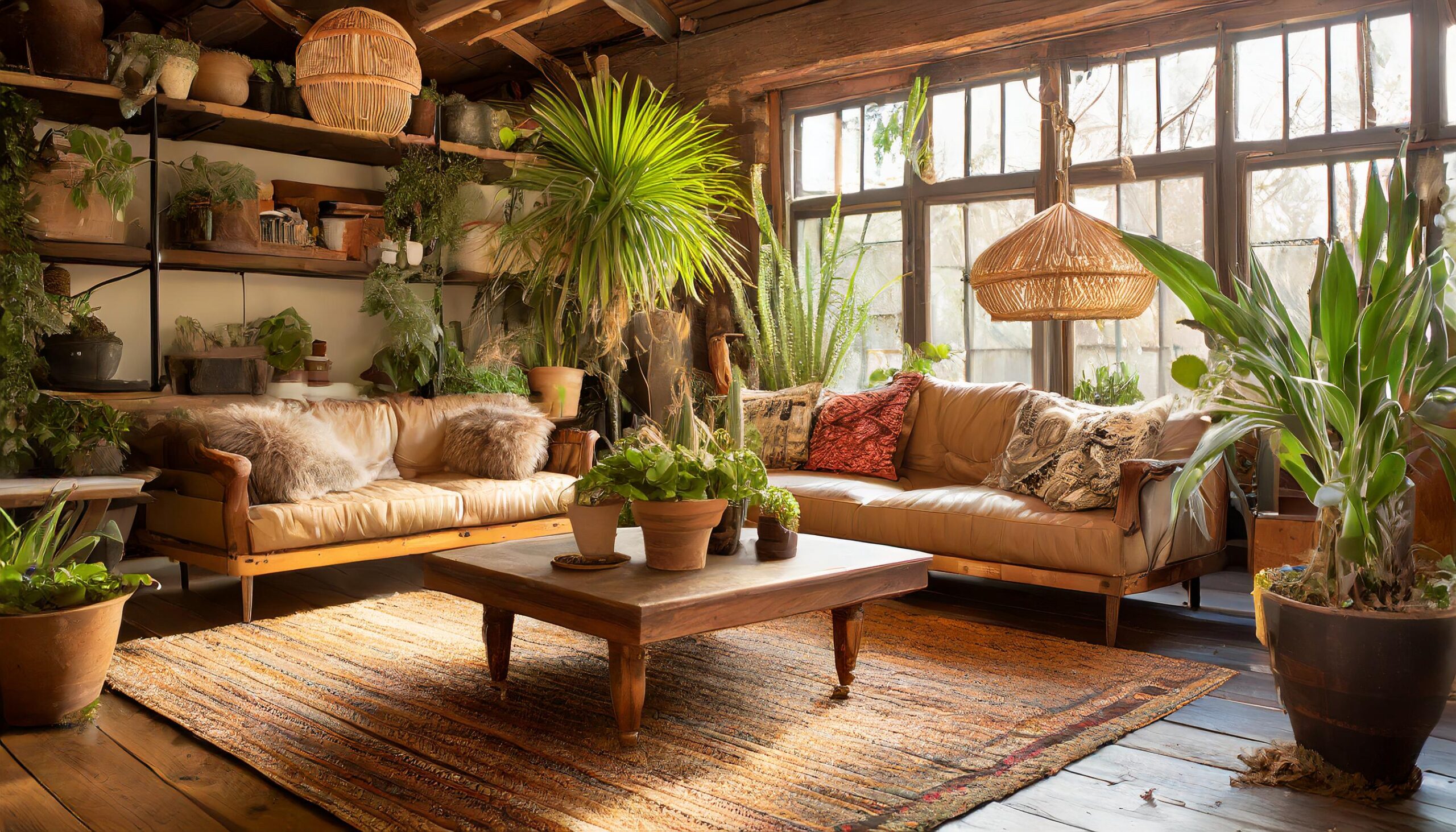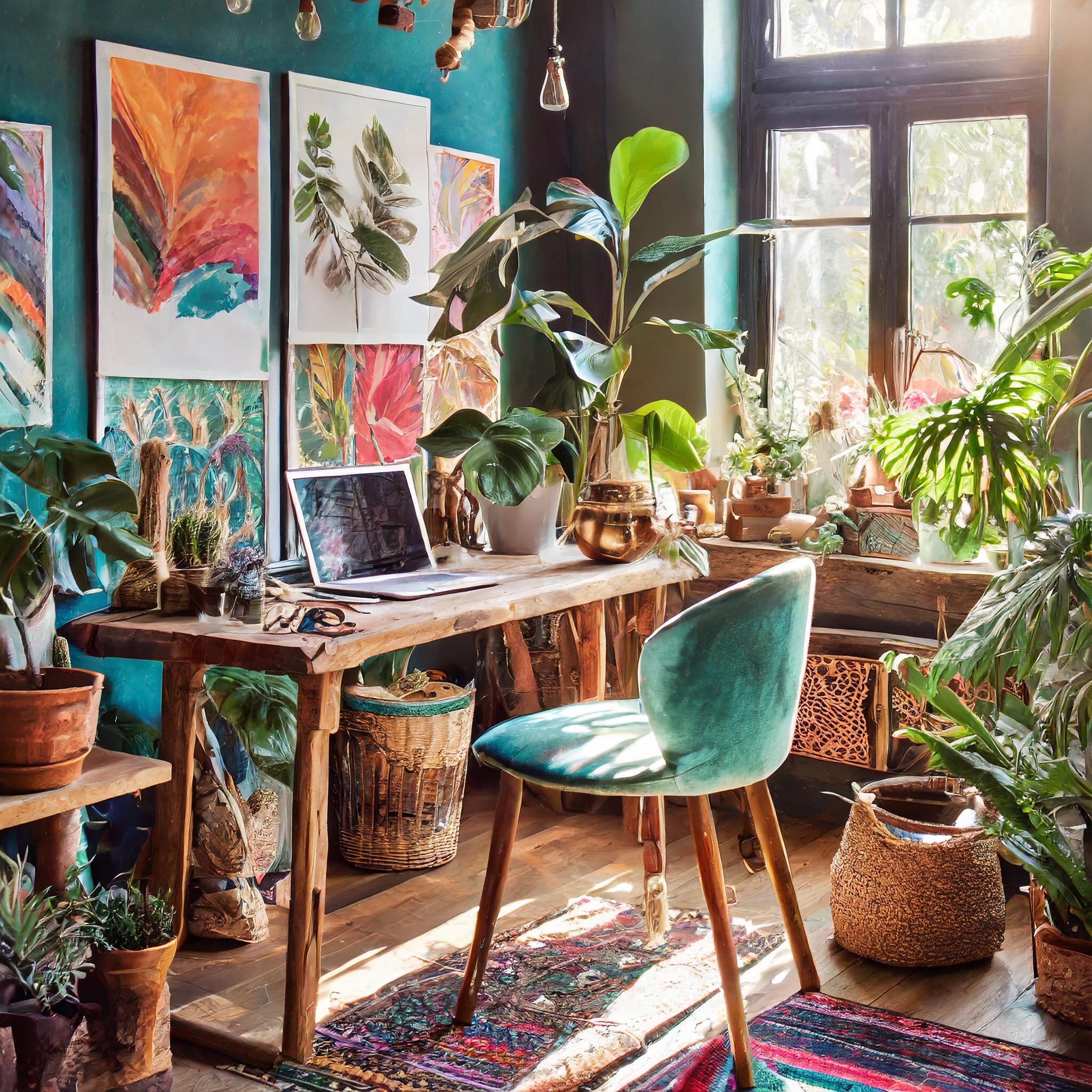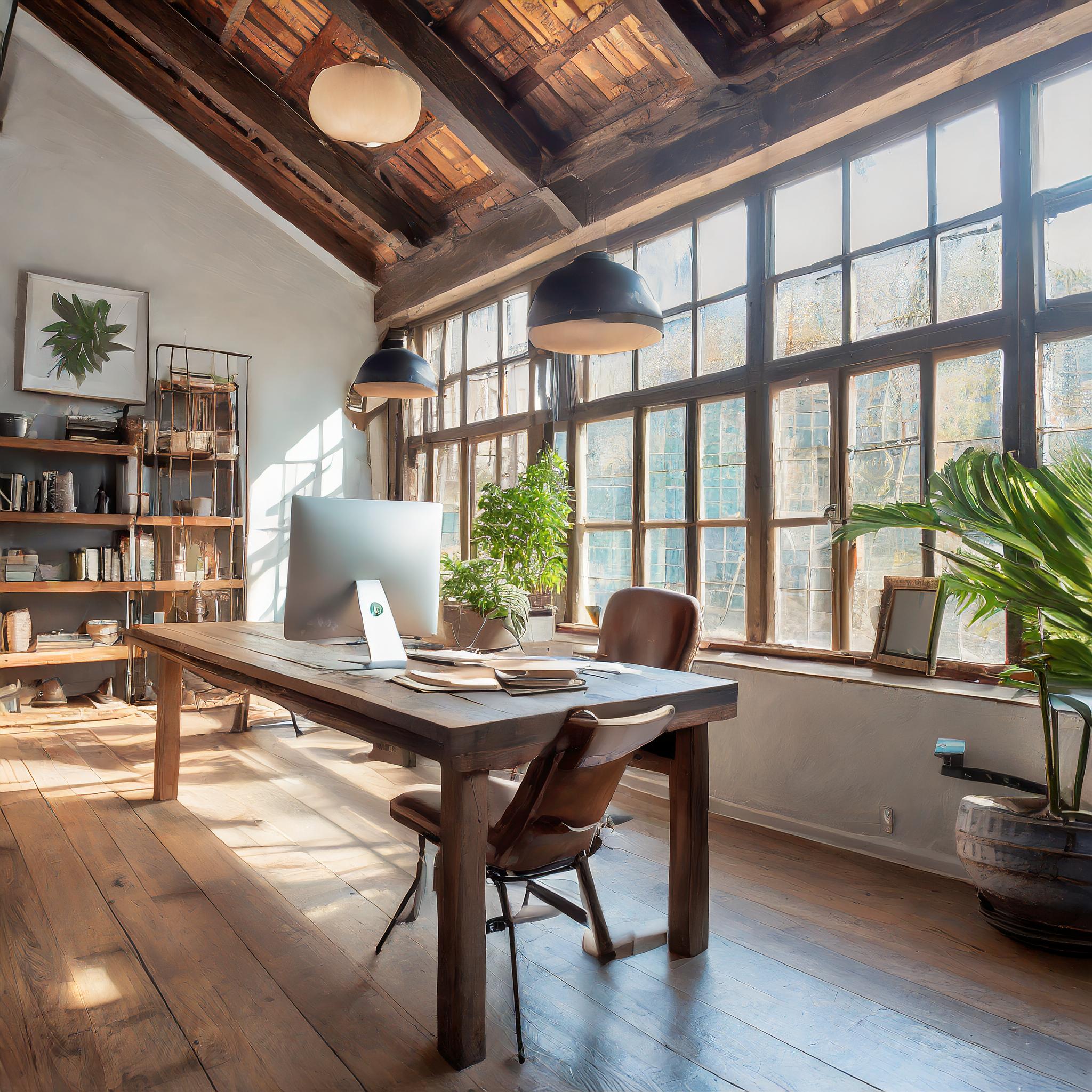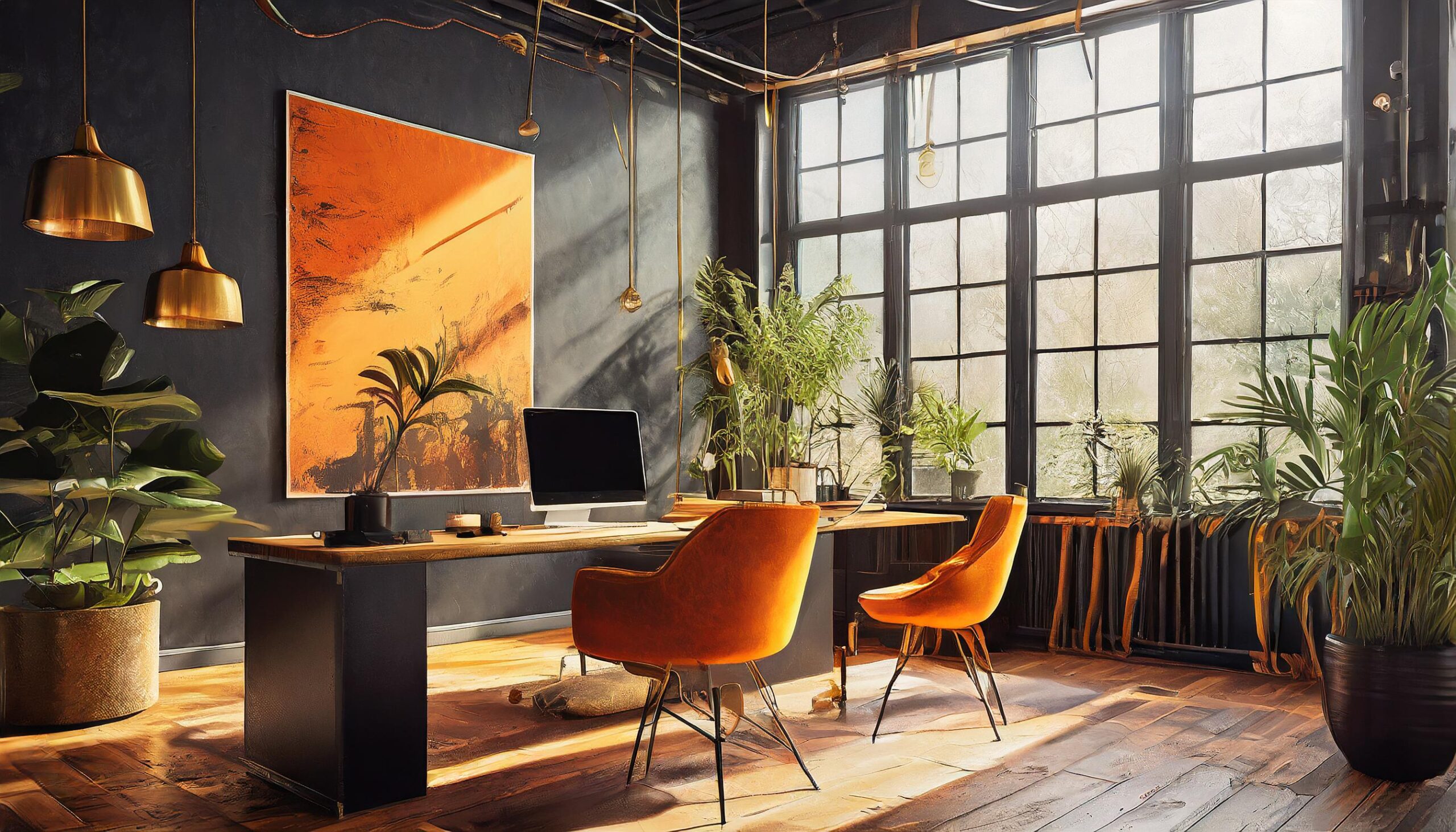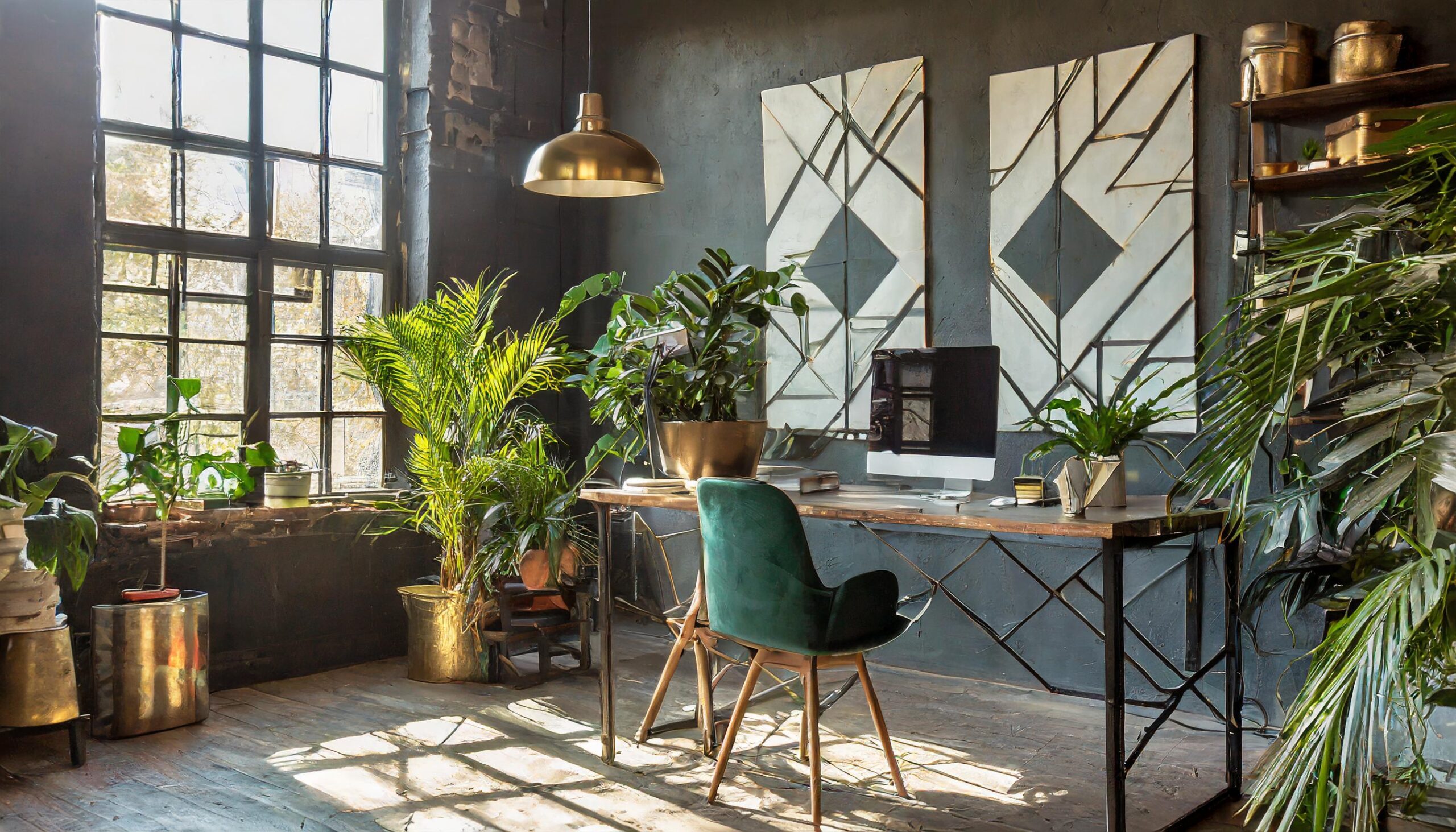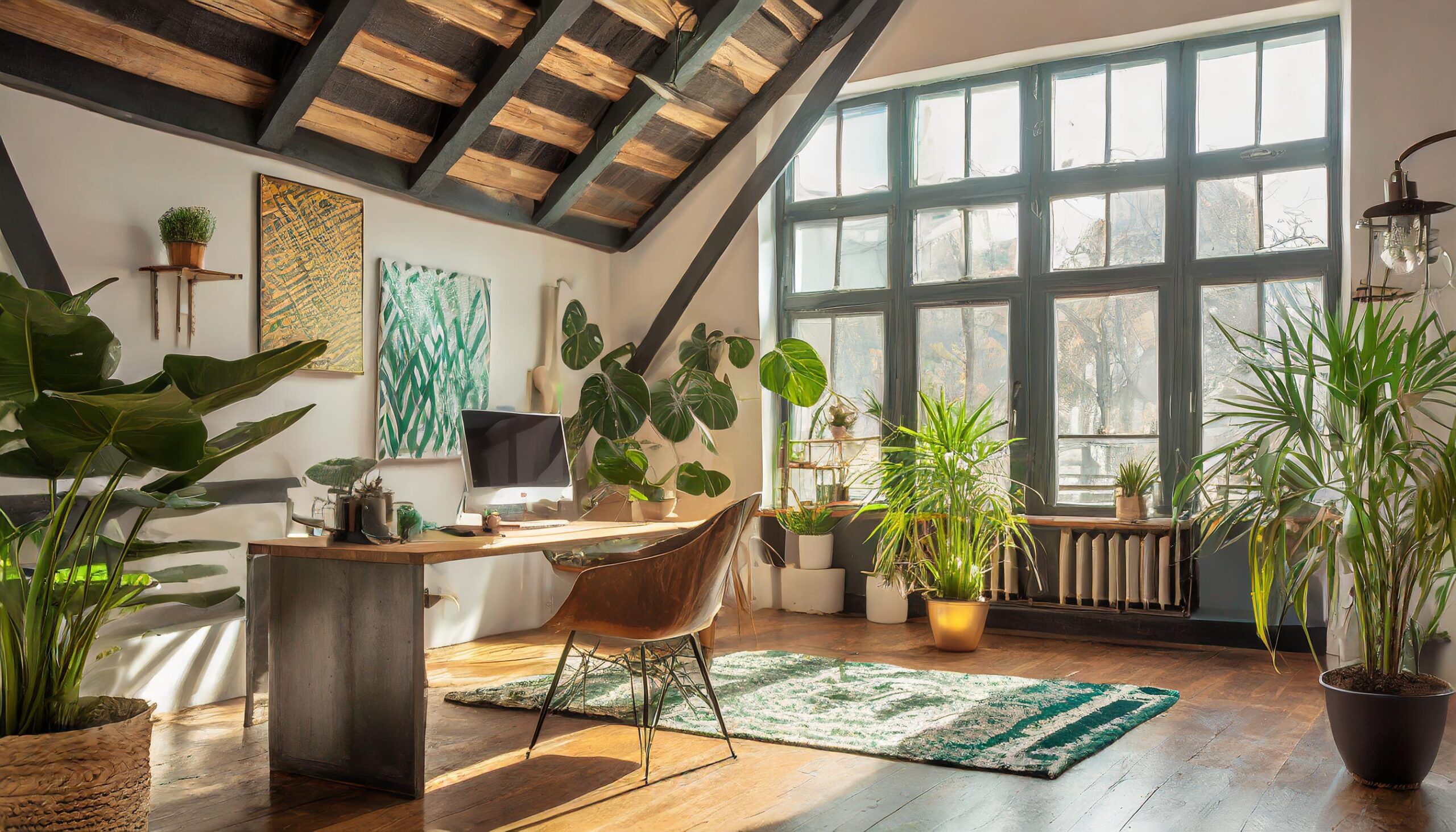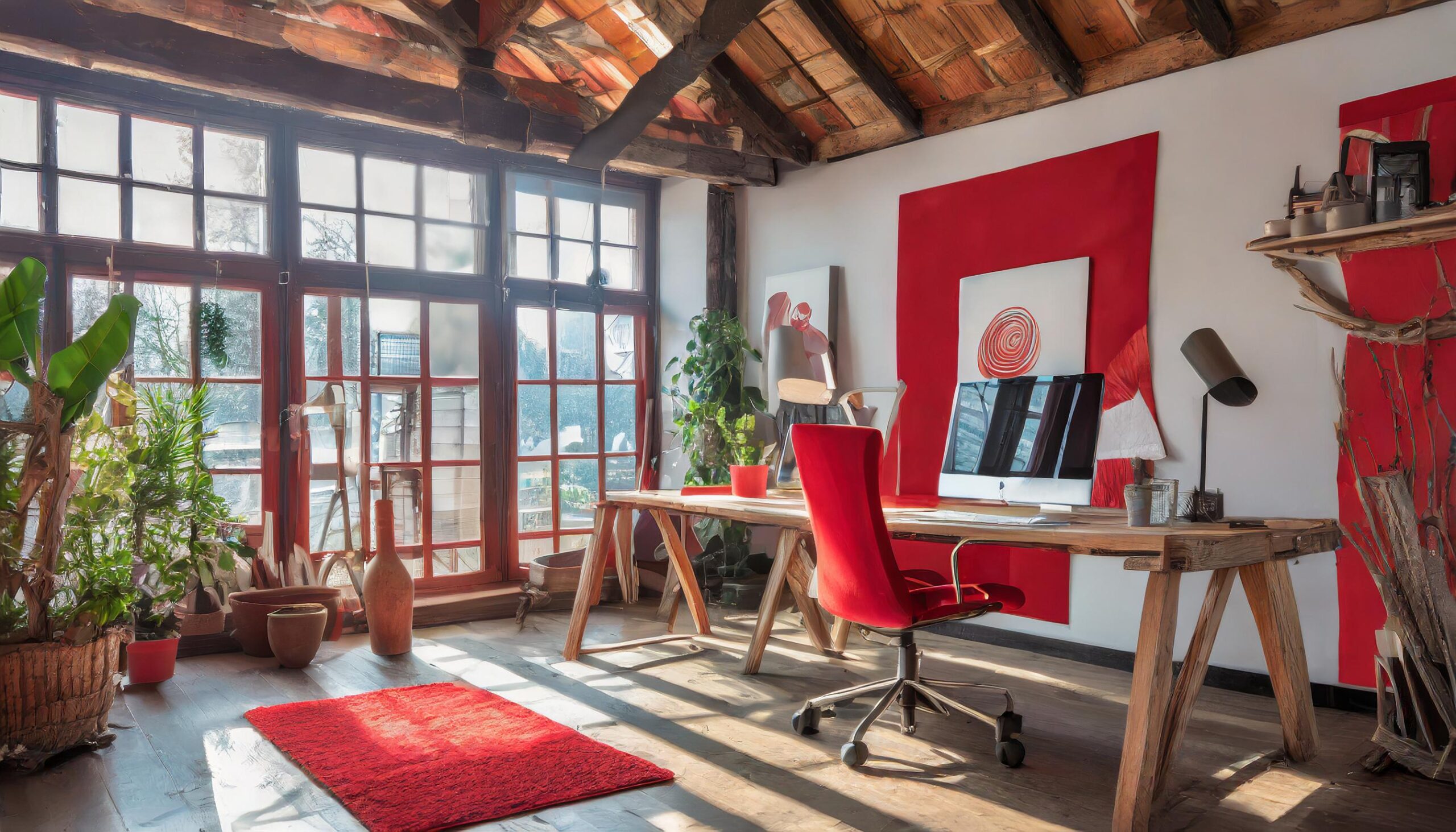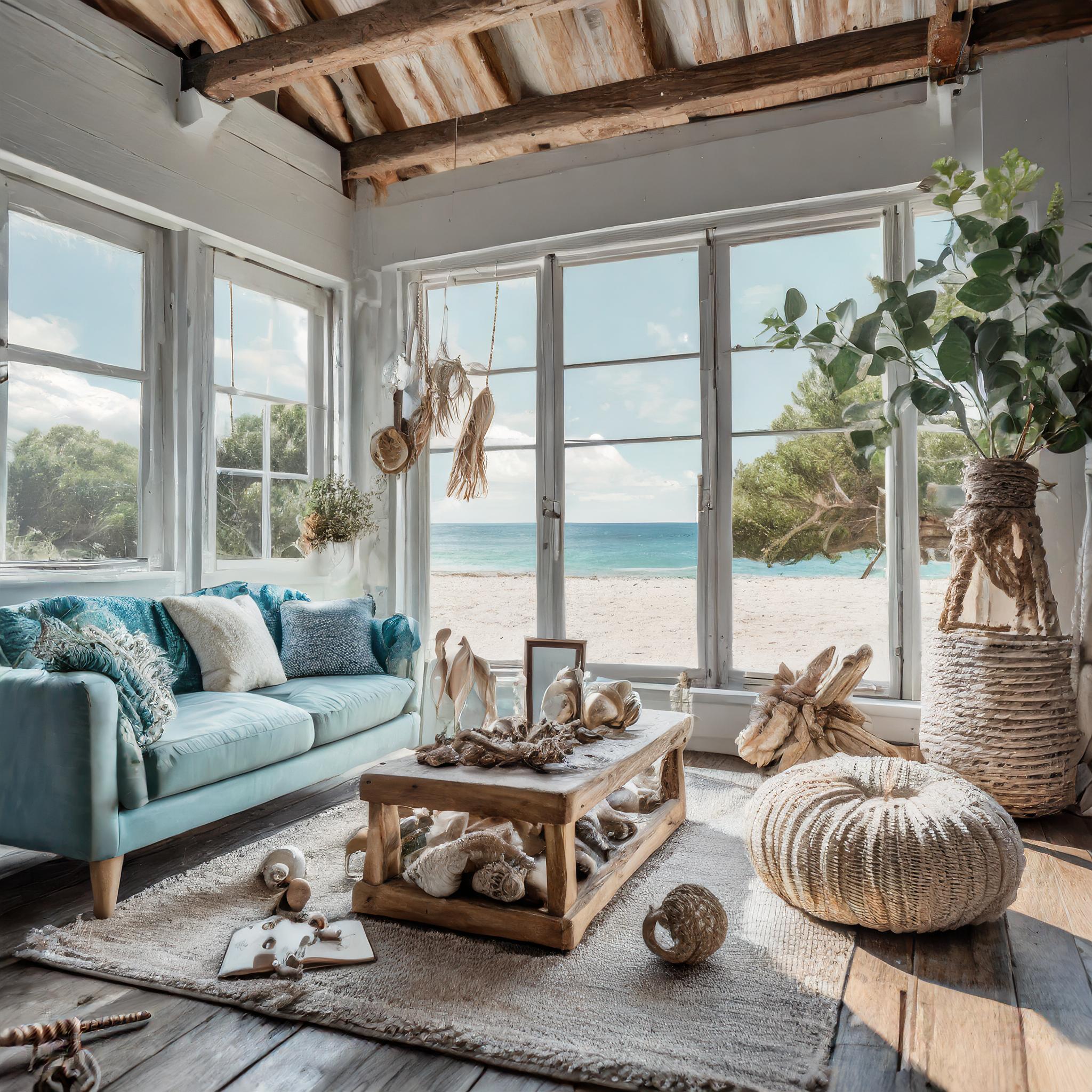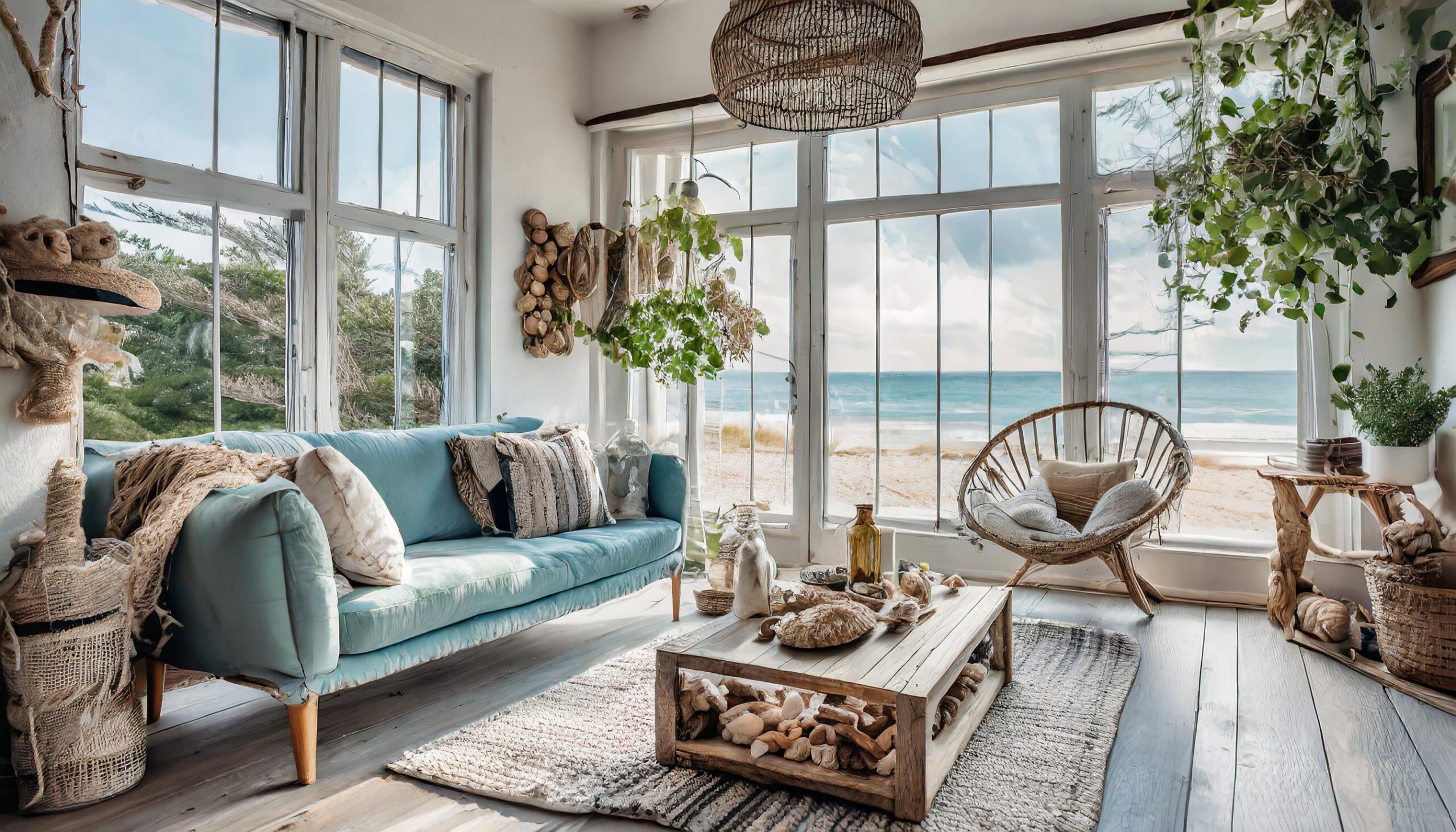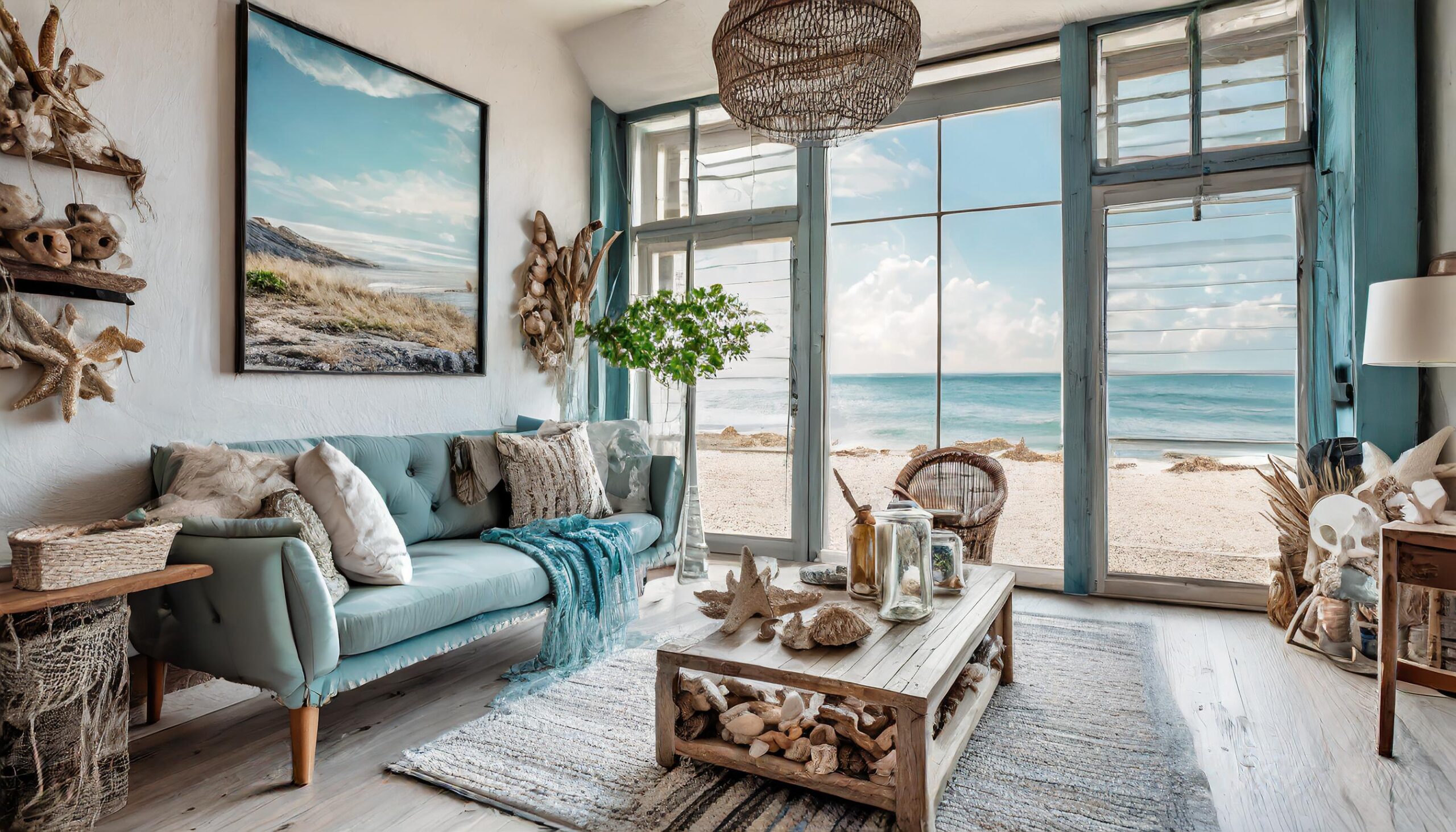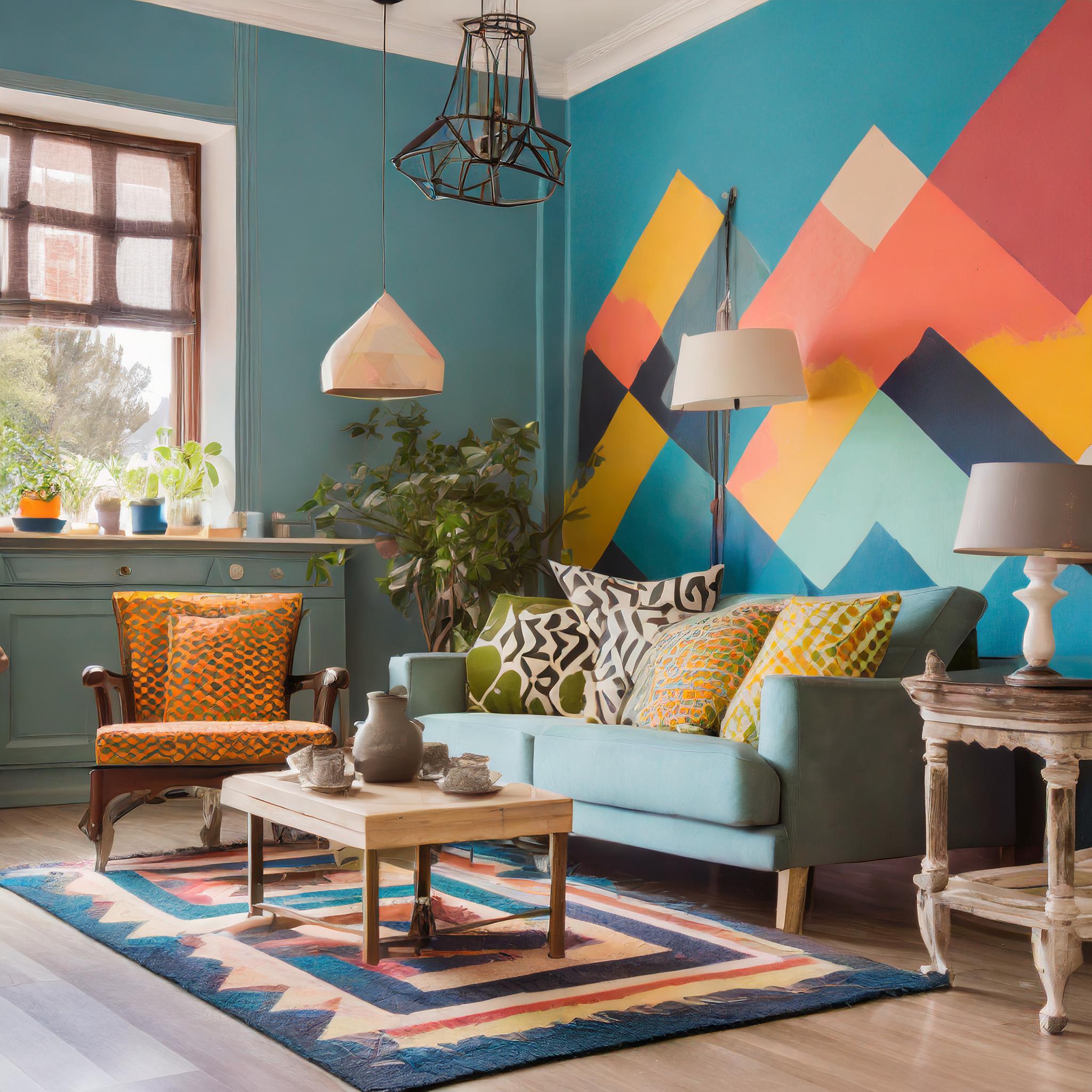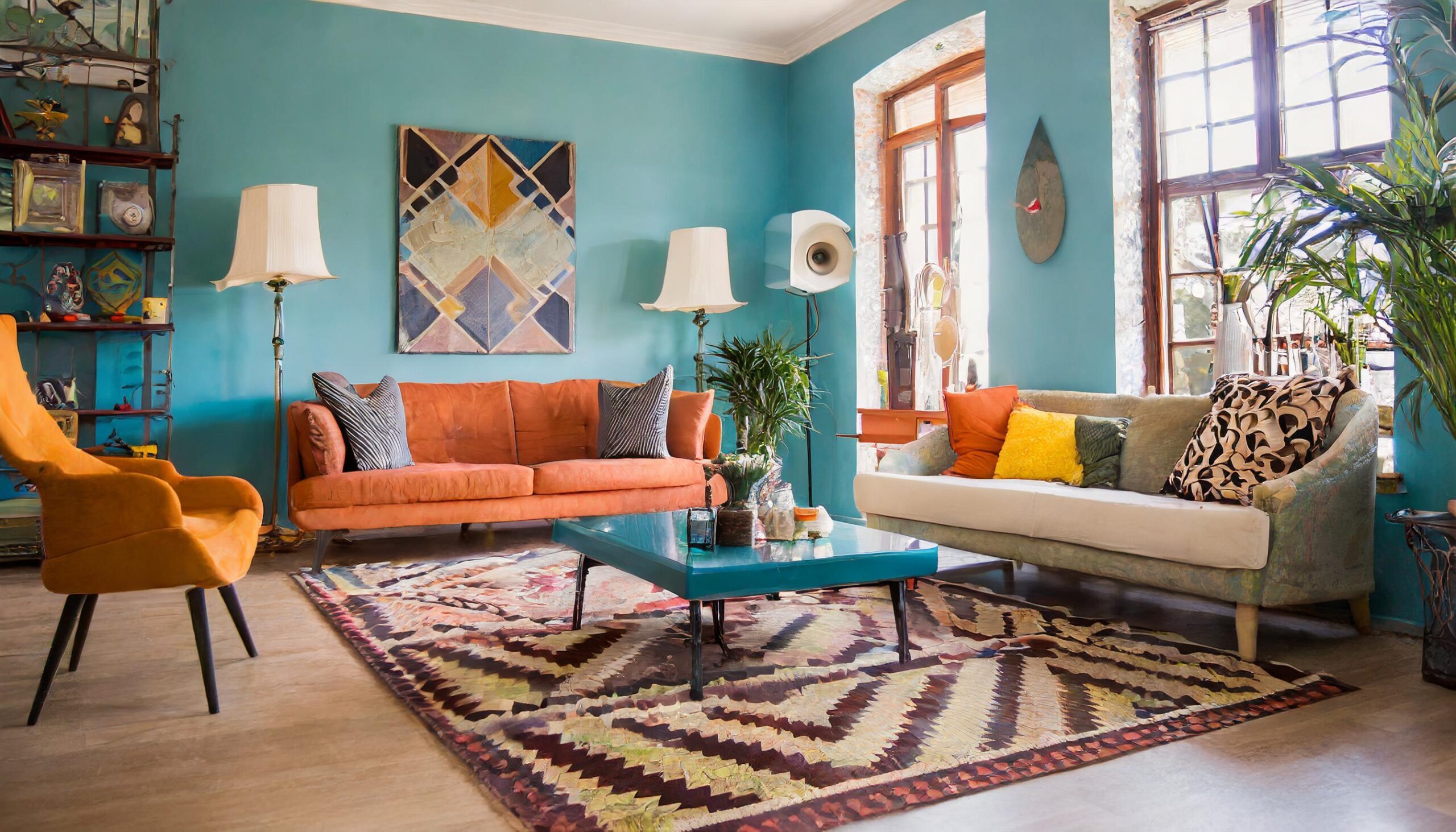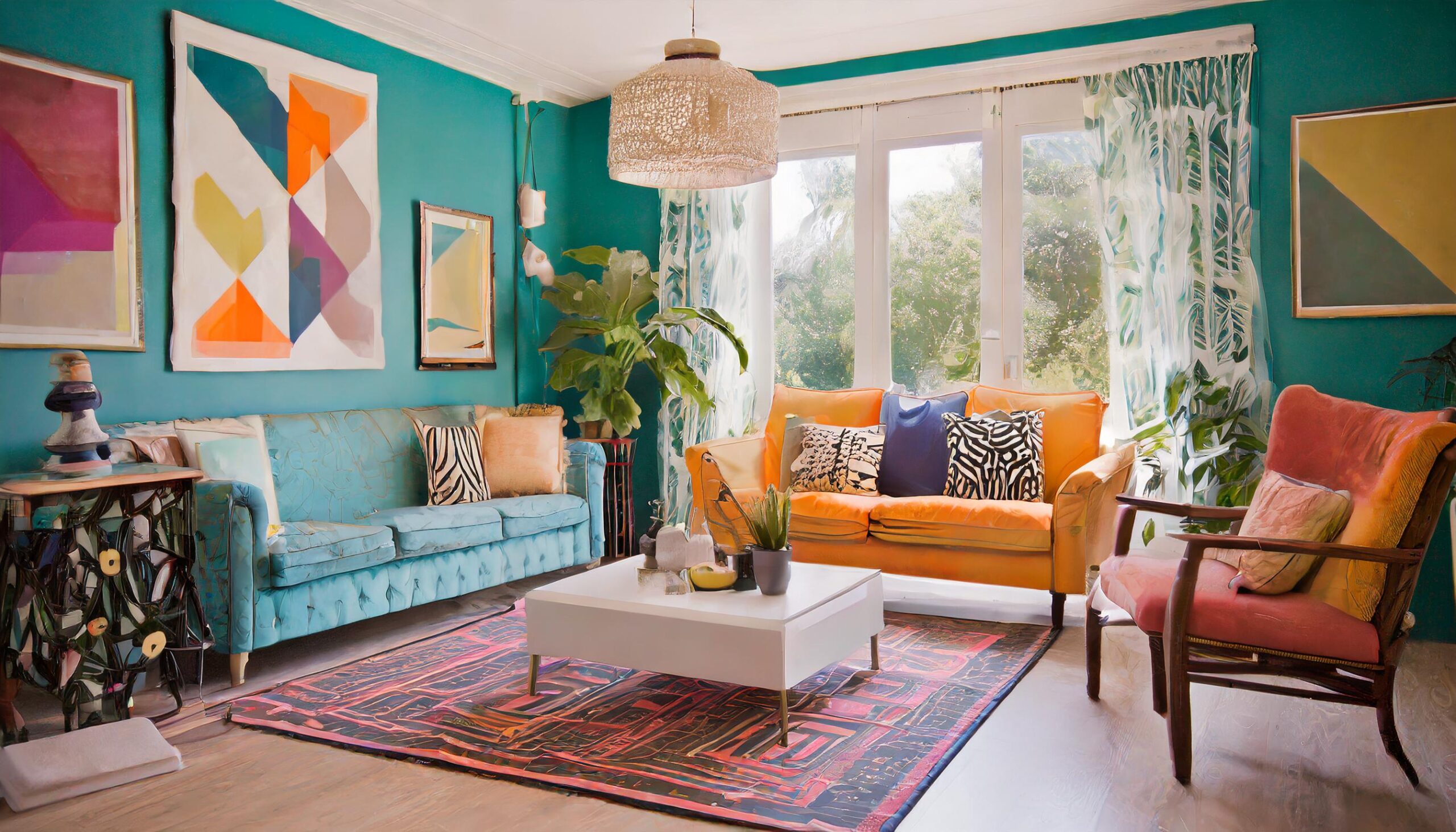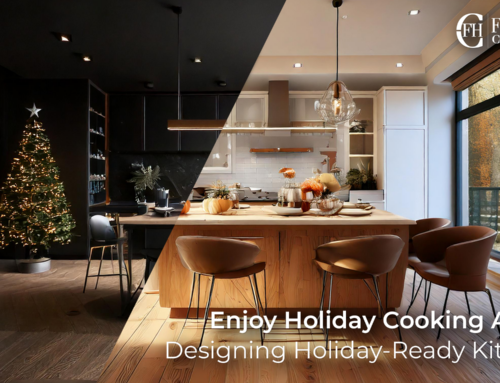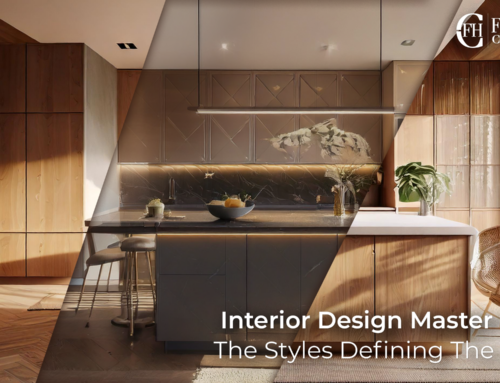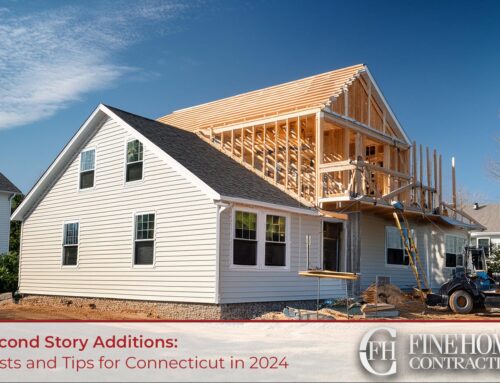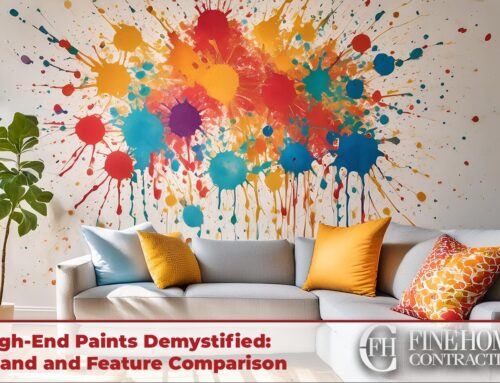As we step into 2024, Connecticut homes are seeing a blend of personalization and trend-setting designs that make each space unique. Understanding what makes your home ‘yours’ is key to creating a space that reflects your personality and meets your needs. The recent tendencies of remodelers and homeowners to aim for a blank canvas, stick to “agreeable gray” walls, and carve out very neutral spaces is fading, with many opting for a twist towards personalized, maximalist designs.
This year, it’s all about creating spaces that resonate with individual preferences while staying on top of the latest trends. We’re excited to see Connecticut’s interior design culture continue to change, and to share a few of our favorite ongoing trends and styles that we think are going to dominate home remodels this year!
Exploring Style Trends of the Year
Maximalist Design: A Bold Return to Color and Creativity
What is Maximalist Design? Maximalist design is like a party in your room, where every piece of furniture, art, and decoration gets an invite. Unlike minimalism, which keeps things simple and clutter-free, maximalism celebrates lots of colors, patterns, and textures all hanging out together. It’s all about filling your space with things you love, making it feel cozy, interesting, and full of life.
The philosophy of maximalism, “more is more,” contrasts with the minimalist mantra of “less is more,” and it embodies a bold, expressive approach to design. Maximalism embraces a mix of patterns, a vibrant palette, and a diverse combination of art and decorative objects, reflecting personal tastes and stories. This design approach is about creating rich, layered, and deeply personal spaces that defy simplicity, celebrating individuality and the joy of abundance.
How to Bring Maximalism into Your Home Bringing maximalism into your home is like creating a treasure chest of your favorite things. Start by picking a color you really love and make it the star of your room. Then, invite more colors to the party that look good with your star color. Remember, in a maximalist design, more is more!
Next, mix in different patterns like stripes, florals, or polka dots. Don’t be shy! They can be on your pillows, rugs, curtains, or even wallpaper. The trick is to make sure there’s a little bit of matching going on, so it looks like everything belongs together.
Don’t forget to add all kinds of textures too. Soft pillows, fluffy rugs, shiny metals, and smooth woods make your room feel like it has many different layers, making it super interesting to look at and feel.
Tips for Creating a Maximalist Theme
- Start with What You Love: Pick items that make you happy, like your favorite artwork, photos, or even a collection of cool rocks you found. Your room should tell the story of what you love.
- Create a Focal Point: Choose one part of your room, like a big, colorful painting or a funky piece of furniture, to be the main attraction. Everything else in the room can be like the supporting characters in a movie, making the star shine even brighter.
- Play with Scale: Mix big things with little things. A huge lamp next to a tiny table can look really cool and make your room more fun.
- Layer Your Lighting: Use different kinds of lights, like a big ceiling light, a couple of table lamps, and maybe some string lights. This makes your room feel warm and inviting.
- Rotate Your Collections: If you have lots of things you love, like comic books, seashells, or action figures, you don’t have to show them all at once. Keep some tucked away and switch them out every now and then. It’s like giving your room a mini-makeover without buying new stuff.
Maximalist design is all about making your space feel like a big hug that’s full of your favorite things. By mixing colors, patterns, and textures, and following these tips, you can create a room that’s uniquely you and super fun to be in.
Rustic Revival: Bringing the Outdoors Inside
What is Rustic Revival Design? Rustic revival design is like taking a piece of the countryside and bringing it into your home. It’s all about celebrating the beauty of nature, with a cozy and warm feeling, like being in a cabin in the woods. This style loves using natural materials like wood, stone, and metal, and it often includes older, vintage pieces that tell a story.
Incorporating Rustic Revival in Your Home To bring the rustic revival style into your home, start with the basics: wood and more wood! Think about adding wooden furniture, like a big, sturdy dining table or a coffee table made from reclaimed wood. Wood beams on the ceiling or wooden floors can also add a lot of rustic charm.
Next, look for ways to add other natural elements. A stone fireplace or a metal light fixture with an old-fashioned look can really tie the room together. Don’t forget about fabrics like wool or linen for your blankets, curtains, or pillows, to add a cozy touch.
Tips for Creating a Rustic Revival Theme
- Mix Old and New: Combine new pieces with older, vintage ones. A brand-new sofa can look great next to an antique wooden chest.
- Add Cozy Textures: Use lots of soft, cozy textures to make your space feel warm and welcoming. Think fluffy blankets, woven rugs, and comfy throw pillows.
- Bring in Nature: Decorate with things from nature, like branches, pinecones, or stones. Houseplants can also add a nice touch of green.
- Use Earthy Colors: Stick to colors you’d find in nature, like greens, browns, and grays. These colors help create a calm, earthy vibe.
- Focus on Lighting: Good lighting is key to making a rustic space feel homey. Use warm, soft lights and consider adding a dimmer switch to control the mood.
Rustic revival is about creating a space that feels warm, inviting, and a little bit like a cozy retreat from the outside world. By using natural materials and earthy colors, and mixing in some vintage pieces, you can create a home that feels both rustic and fresh.
Home Office Design: Styles and Inspirations
Home offices have become a staple in households far beyond the pandemic’s push for remote work. What started as a necessity has evolved into a cherished part of our homes, blending seamlessly into our daily lives. The idea of a home office is no longer just about work; it’s about carving out a personal space dedicated to focus, creativity, and productivity. Whether it’s for advancing your career from the comfort of your home, indulging in hobbies that require concentration, or simply having a quiet spot to organize your thoughts and plans, incorporating a home office has become a popular trend among homeowners. This shift reflects a broader understanding of the value of having a versatile space that supports various aspects of our lives, from professional tasks to personal passions.
Popular Home Office Styles Designing a home office isn’t just about picking a desk and a chair; it’s about creating a space where you can be productive and inspired. Let’s explore some popular styles:
- Modern Minimalist: This style is all about keeping things simple and clutter-free. Think clean lines, minimal decorations, and a neutral color scheme.
- Industrial Chic: Industrial design mixes metal and wood for a cool, urban look. It’s perfect for those who love a more raw and edgy feel.
- Cozy Cottage: Imagine a comfy, cozy space with soft colors, lots of light, and comfy furniture. It’s like bringing a bit of the countryside into your home.
- Bohemian Vibes: Boho style is for the free spirits. It’s colorful, eclectic, and full of life, with lots of plants, patterns, and textures.
Incorporating the Style
- Modern Minimalist: Keep decorations to a minimum. Choose a simple desk, a comfortable chair, and maybe one or two pieces of art that make you happy.
- Industrial Chic: Look for a desk with metal legs and a wooden top. Add some metal shelving and a cool, vintage lamp to complete the look.
- Cozy Cottage: Choose a desk in a light wood or painted white. Add a comfy chair with a soft cushion, and maybe a small rug to keep your feet warm.
- Bohemian Vibes: Pick a desk that has an interesting shape or color. Mix and match your chair, add some colorful cushions, and don’t forget the plants!
Tips for Creating Your Home Office
- Think About What You Need: Do you need a lot of storage? Do you want a big desk or a small one? Think about what you need to work comfortably.
- Choose the Right Spot: Your office should be in a quiet spot where you can concentrate. If possible, choose a room with a window for some natural light.
- Lighting is Key: Make sure your office has good lighting. A mix of natural light, a bright overhead light, and a desk lamp is usually best.
- Make it Personal: This is your space, so make it feel like it. Add photos, artwork, or anything else that makes you feel happy and inspired.
- Stay Organized: Keep your desk tidy with organizers for your papers and supplies. A clean space can help you focus better.
Creating a home office is all about making a space where you feel comfortable and motivated. Pick a style that speaks to you, think about your needs, and make it personal. With the right setup, your home office can be a place where you do your best work.
Coastal Haven: Embracing the Serenity of the Seaside
Creating a Coastal Haven in your home is about capturing the calm, refreshing vibe of the beach and bringing it indoors. This design theme is perfect for those who love the sea and want to create a light, breezy, and relaxed atmosphere in their homes. Coastal design is characterized by its use of light colors, natural materials, and airy layouts that mimic the openness and tranquility of the seaside.
Essentials of Coastal Haven Design:
- Light and Airy Color Palette: Use colors inspired by the beach, such as soft blues, sandy beiges, and crisp whites, to create a serene backdrop for your space.
- Natural Materials: Incorporate materials that reflect the beach and ocean, like driftwood, sea glass, jute, and linen, to add texture and authenticity to the coastal theme.
- Nautical Accents: Add subtle nautical touches through decor, such as striped patterns, seashells, and maritime-inspired artwork, without going overboard.
- Plenty of Light: Maximize natural light with large windows, sheer curtains, and strategically placed mirrors to reflect light throughout the space.
- Comfortable Furnishings: Choose furniture that invites relaxation, such as plush sofas with slipcovers, wicker chairs, and hammocks or swing chairs.
Bringing Coastal Haven to Your Home:
- Refresh with Paint: Give your walls a fresh coat of paint in soft coastal colors to instantly transform the mood of your space.
- Mix Textures: Combine various textures to add depth and interest. A jute rug, a linen sofa, and a driftwood coffee table can work beautifully together.
- Display Beach Finds: Showcase your collection of beach treasures, like shells, rocks, and driftwood, in clear jars or as part of a gallery wall.
- Outdoor Connection: Create a seamless flow between your indoor and outdoor spaces with French doors or a furnished patio that echoes the coastal theme.
- Soft Lighting: Use lamps with clear glass or light-colored shades to maintain the bright and airy feel even in the evening.
Tips for Crafting Your Coastal Haven:
- Keep It Simple: Avoid clutter to maintain the breezy feel of coastal living. Opt for clean lines and an open layout.
- Layered Blues: Experiment with different shades of blue, from pale sky to deep navy, to reflect the various hues of the sea and sky.
- Textured Walls: Consider adding beadboard or shiplap to walls for a subtle, coastal architectural detail that adds charm and character.
- Reflective Surfaces: Use mirrors and other reflective surfaces to bounce light around the room and evoke the shimmering quality of water.
- Indoor-Outdoor Fabrics: Choose durable, easy-to-clean fabrics for cushions and upholstery that can withstand the sun and sand, just like at the beach.
A Coastal Haven theme is ideal for creating a peaceful retreat that reminds you of your favorite seaside memories. By focusing on light colors, natural elements, and comfortable spaces, you can turn your home into a soothing escape from the hustle and bustle of everyday life.
Retro Revamp: Bringing Back the Classics with a Modern Twist
Retro Revamp is all about breathing new life into the classic styles from the 50s, 60s, and 70s, and blending them with contemporary design elements to create a space that’s both nostalgic and fresh. This theme pays homage to the vibrant colors, bold patterns, and unique furniture designs of the past, while incorporating modern touches to ensure the space feels up-to-date and functional.
Key Elements of Retro Revamp Design:
- Bold Color Choices: Embrace the retro palette with pops of orange, teal, mustard yellow, and pink, balanced with neutral tones to prevent overwhelming the space.
- Iconic Furniture: Look for furniture pieces with distinctive retro shapes, such as egg chairs, tulip tables, or velvet sofas, but choose updated versions or fabrics to keep the look current.
- Geometric and Floral Patterns: Incorporate classic retro patterns in wallpapers, textiles, and art. Think geometric shapes, bold stripes, and groovy florals.
- Mixed Materials: Combine materials typical of the retro era, like wood, metal, and plastic, with modern materials like glass and polished concrete for a contemporary edge.
- Funky Accessories: Add character with retro-inspired accessories, such as lava lamps, sunburst clocks, and shag rugs, but select pieces that complement the modern aesthetic of your home.
Incorporating Retro Revamp into Your Home:
- Feature Wall: Create a focal point with a feature wall covered in retro-inspired wallpaper or a bold paint color to set the tone for the space.
- Update Classic Pieces: Reupholster vintage furniture in modern fabrics or refinish wood pieces in contemporary hues to blend old and new seamlessly.
- Layer Lighting: Combine retro lighting fixtures, like Sputnik chandeliers or arc floor lamps, with modern LED lights for a layered lighting scheme that’s both functional and stylish.
- Artful Arrangements: Display retro art pieces or posters in modern frames, or mix them with contemporary art for an eclectic gallery wall.
- Curated Collections: Showcase collections of vintage items, such as vinyl records or mid-century ceramics, in a minimalist, modern way to avoid a cluttered look.
Tips for Mastering the Retro Revamp Theme:
- Start Small: If you’re new to mixing retro and modern, start with small accents or a single retro-inspired piece to ensure the blend feels right in your space.
- Functionality First: Choose retro designs that don’t sacrifice comfort or functionality. Modern replicas often offer the best of both worlds.
- Balance with Neutrals: Use neutral walls, floors, and large furniture pieces as a backdrop to allow the retro elements to shine without overwhelming the room.
- Modernize with Tech: Incorporate modern technology in a way that complements the retro vibe, such as a vintage-style turntable with Bluetooth capability.
- Personalize Your Space: The Retro Revamp theme should reflect your personality and style. Choose pieces that speak to you and create a space that feels uniquely yours.
Retro Revamp is a playful and creative design theme that allows you to honor the past while embracing the present. By thoughtfully blending vintage charm with modern sensibilities, you can create a space that’s both reminiscent and refreshingly new.
In conclusion, these themes offer more than mere decoration; they provide a lens through which we can express our unique identities and stories within our homes. Whether you’re drawn to the serene echoes of the seaside, or the vibrant energy of retro aesthetics, the key is to blend these elements in a way that resonates with your personal narrative. As you stand at the crossroads of past influences and contemporary trends, remember that your home is a reflection of your journey. Embrace the creative process as you sculpt a space that not only speaks to your aesthetic sensibilities but also nurtures your well-being and inspires your daily life.

